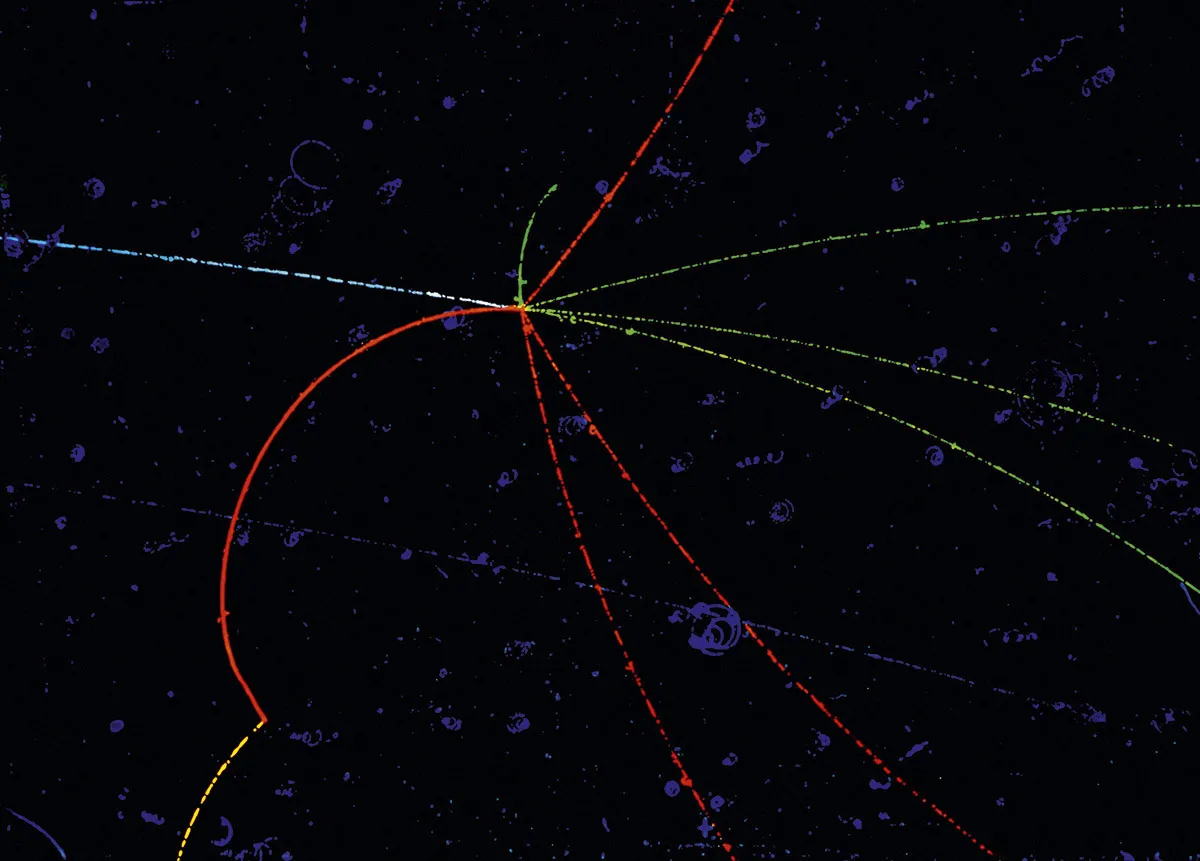Particles and antiparticles have opposite properties, such as electric charge. For instance, the antiparticle of the negative electron is the positive positron. Every physics process we know of creates equal amounts of matter and antimatter.
When a particle meets its antiparticle however, it ‘annihilates’, ultimately into high-energy photons. As such, the Universe should contain no matter or antimatter, and just be a sea of photons. Instead, it contains enough matter to make about two trillion galaxies and, as far as we can tell, no antimatter.
A clue to what happened to all the antimatter comes from the fact that the ‘afterglow’ of the Big Bang (the cosmic background radiation) contains about 10 billion photons for every particle of matter in today’s Universe. This tells us that, in the Big Bang, there were 10 billion and one particles of matter for every 10 billion of antimatter, and after an orgy of annihilation there were 10 billion photons for every particle of matter.
Physicists have long been looking for a subtle asymmetry in the laws of physics that explains this excess of matter over antimatter in the Big Bang. And they think they may have found it in the behaviour of neutrinos.
Neutrinos are ghostly subatomic particles that rarely interact with matter. (Hold up your thumb; about 100 billion neutrinos, generated by nuclear reactions in the Sun, pass through your thumbnail every second.) Neutrinos come in three types and each neutrino continually changes from an electron-neutrino to a muon-neutrino to a tau-neutrino and back again.

Since 2016, physicists at the T2K experiment in Japan have been trying to show that neutrinos behave differently to antineutrinos. To do this, they generate beams of muon-neutrinos and muon-antineutrinos at a facility in Tokai and send them to the giant underground Super-Kamiokande detector, 295km away.
So far, they’ve detected more electron-neutrinos and fewer electron-antineutrinos than expected, suggesting neutrinos do behave differently to antineutrinos. It’s a small effect that needs to be confirmed, but it could provide the mechanism for creating a matter-dominated Universe.
Neutrinos have too little mass to have made much difference to the Universe. Crucially, however, they only spin clockwise around their direction of flight, and physicists wonder whether neutrinos and antineutrinos had super-heavy partners with opposite spin in the Big Bang.
These ultra-heavy particles would have been able to form only in the high-energy conditions of the Big Bang and would have quickly decayed into the particles we see today. In doing so, they could have imprinted their asymmetry on the cosmos, producing the 10 billion and one particles of matter for every 10 billion of antimatter needed to explain why we live in a Universe exclusively of matter.
Read more:
